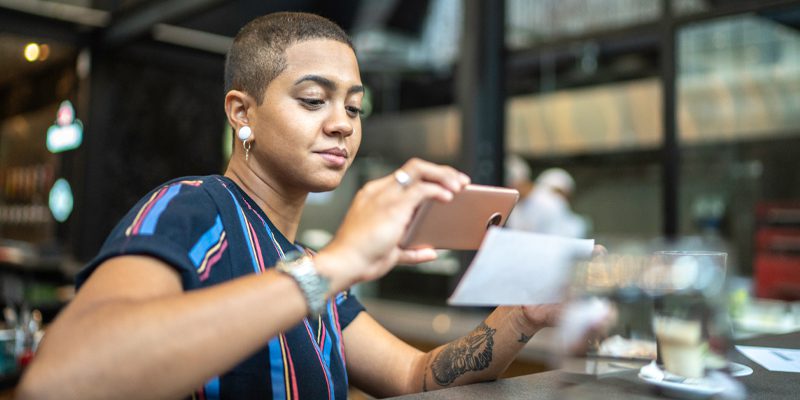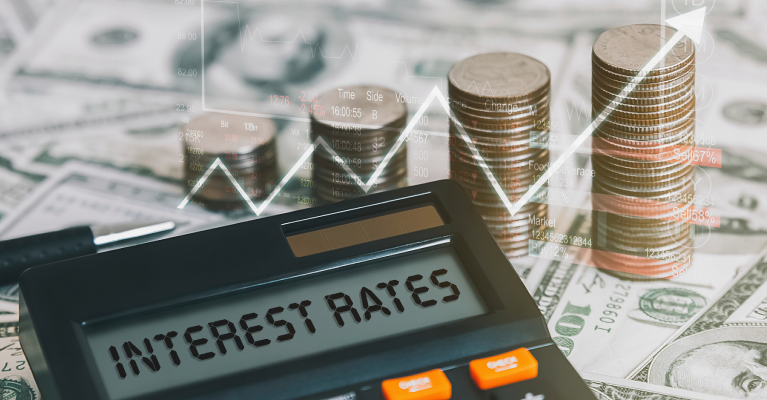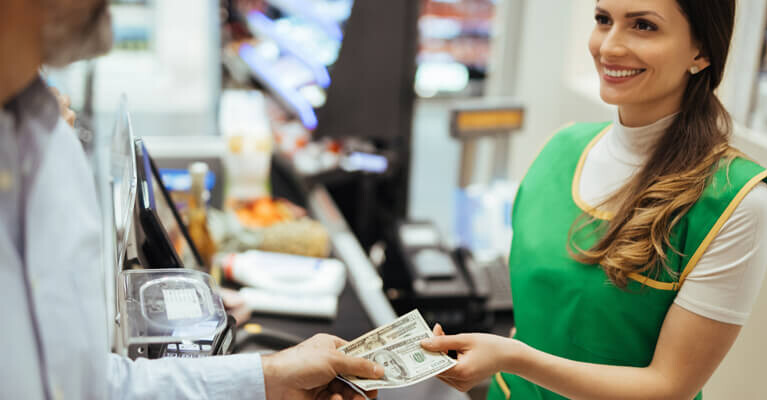Mobile Banking and Payments Are on the Rise – Here’s How You Can Use Them Together

Over the past year, we’ve seen a rapid acceleration of consumers using mobile banking and digital payment options to keep track of their expenses, send and receive money from family and friends, make purchases at local businesses and more.
While the initial surge came due to COVID-19 pandemic lockdowns and ensuing restrictions, the use of mobile banking apps and contactless payments has continued to grow. Consumers found that once they connected their bank accounts to Peer-to-Peer (P2P) apps like Zelle®,[1] or their rewards credit cards to apps like Venmo or Apple Pay, the ease of using these forms of payment – along with the perks, such as earning cash back – facilitated rapid adoption.
A recent survey conducted by Cash Connect, a division of WSFS Bank, found that while cash and credit card payments are still very popular, businesses are increasingly accepting digital payments through P2P apps as well, with 71% of owners and financial decision-makers reporting that their business now accepts these forms of payment.
Here are some tips and benefits to consider when connecting your accounts to digital payment apps and managing your money on-the-go.
Find Out What Your Bank Offers
Many banks have partnered with Zelle® to connect your checking account easily and safely with the service, allowing you to send and receive money from friends, family and some small businesses too![1]
Other payment apps, like Venmo and PayPal, can also connect to your debit card for use when a small business you frequent hasn’t started accepting Zelle® quite yet. Just remember, these apps may charge fees that you wouldn’t incur using Zelle®.
Connect Your Credit Card
The Cash Connect survey found that 82% of businesses saw an increase in P2P apps being used for purchases over the past six months. Connecting your credit card to your P2P apps can provide an added layer of security, as most credit cards have fraudulent activity alerts in place to let you know when something looks suspicious, and you can set up purchase alerts so if something looks fraudulent to you, you know right away and can report it.
And many credit cards, such as Visa and Mastercard, won’t hold you responsible for unauthorized charges made with your account, as long as you report suspicious or fraudulent activity within specified timeframes in your card agreements. This applies whether your card is lost, stolen or fraudulently used, online or offline.
Going Contactless?
If your rewards credit card is contactless, you get the added benefit of enhanced security at chip-enabled terminals without having to touch anything but your own card. You simply tap the card on the terminal to pay.
Use Your Banking App Safely
Your mobile banking app can be used for many purposes, including checking statements, depositing checks, making credit card and mortgage payments. Mobile banking apps also provide an added layer of security by using biometric data or two-factor authentication methods to access accounts. It’s a good idea to use these tools for your device and any apps you use that store or access personal or financial information. Some ATMs also have QR code compatibility so you can use your bank’s mobile app to quickly and safely get cash from your accounts.
Use these tools and tips to discover your own mobile banking and digital payment preferences that enable you to spend, track and earn rewards on-the-go and at your convenience.

Helping you boost your financial intelligence.
Read our financial resources from your friends at WSFS.



